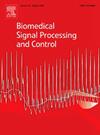RFSC: Multimodal medical image alignment fusion diagnostic classification network based on de discriminator image translation
IF 4.9
2区 医学
Q1 ENGINEERING, BIOMEDICAL
引用次数: 0
Abstract
Lung cancer, one of the most prevalent and deadly cancers worldwide, poses a significant threat to human health. Computer-aided diagnosis systems currently play a critical role in lung cancer treatment. However, the diagnostic effectiveness of high-dose Computed Tomography (CT) methods is limited, also raising concerns about radiation exposure. Furthermore, standalone Magnetic Resonance Imaging (MRI) often fails to depict lesion contours accurately, thereby restricting its usability in computer vision for lung nodule diagnosis. In light of these challenges, studies have proposed a method that combines low-dose CT and MRI images for lung nodule diagnosis. Nevertheless, the efficacy of this fusion method has attracted attention among researchers. To enhance the efficiency of image fusion, this study introduces a jointly trained multimodal registration network that maximizes the preservation of image information. Concurrently, the registered images are utilized for image fusion, and a classifier based on lung nodule image features is constructed. Finally, multiple models are integrated into a multitask artificial intelligence diagnosis model to enhance clinical diagnostic efficacy. Compared to other registration models, the registration Dice Similarity Coefficient (DSC) achieves 0.9165591, and the accuracy of benign-malignant lung nodule classification reaches 89.916%.
基于去鉴别器图像翻译的多模态医学图像对齐融合诊断分类网络
肺癌是世界上最普遍和最致命的癌症之一,对人类健康构成重大威胁。计算机辅助诊断系统目前在肺癌治疗中发挥着关键作用。然而,高剂量计算机断层扫描(CT)方法的诊断效果有限,也引起了对辐射暴露的关注。此外,独立磁共振成像(MRI)往往不能准确描绘病灶轮廓,从而限制了其在计算机视觉诊断肺结节中的可用性。鉴于这些挑战,研究提出了一种结合低剂量CT和MRI图像进行肺结节诊断的方法。然而,这种融合方法的有效性引起了研究人员的关注。为了提高图像融合的效率,本研究引入了一种联合训练的多模态配准网络,最大限度地保留了图像信息。同时,利用配准后的图像进行图像融合,构建基于肺结节图像特征的分类器。最后,将多个模型整合成一个多任务人工智能诊断模型,提高临床诊断效能。与其他配准模型相比,配准骰子相似系数(DSC)达到0.9165591,肺结节良恶性分类准确率达到89.916%。
本文章由计算机程序翻译,如有差异,请以英文原文为准。
求助全文
约1分钟内获得全文
求助全文
来源期刊

Biomedical Signal Processing and Control
工程技术-工程:生物医学
CiteScore
9.80
自引率
13.70%
发文量
822
审稿时长
4 months
期刊介绍:
Biomedical Signal Processing and Control aims to provide a cross-disciplinary international forum for the interchange of information on research in the measurement and analysis of signals and images in clinical medicine and the biological sciences. Emphasis is placed on contributions dealing with the practical, applications-led research on the use of methods and devices in clinical diagnosis, patient monitoring and management.
Biomedical Signal Processing and Control reflects the main areas in which these methods are being used and developed at the interface of both engineering and clinical science. The scope of the journal is defined to include relevant review papers, technical notes, short communications and letters. Tutorial papers and special issues will also be published.
 求助内容:
求助内容: 应助结果提醒方式:
应助结果提醒方式:


